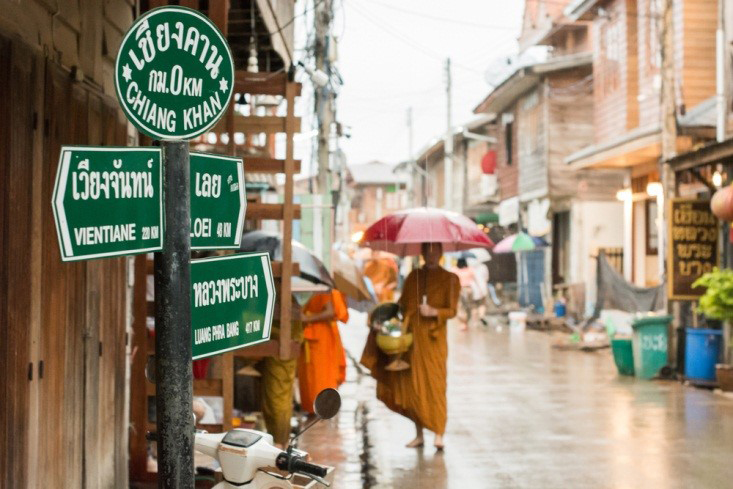Chiang Khan and Its Journey to CBT Thailand
Unveil a development plan for “Chiang Khan in Loei province”, a creative and cultural tourist spot for visitors to witness local ways of life along the Mekong River and relationship between Thailand and Laos.

“Chiang Khan in Loei province” is included in the list of Sustainable Destinations Top 100 by Green Destinations Foundation in the Netherlands and Internationale Tourismus-Börse (ITB) in Berlin, Germany. Being ranked in this Top 100 list has reached one of the goals of the National Strategy in creating a tourism ecosystem. However, the Designated Areas for Sustainable Tourism Administration (Public Organization) or DASTA is still aiming to develop “Chiang Khan in Loei province” to become a creative and cultural tourist attraction.
Mr. Thumanoon Phaktoop, manager of the designated area office 5 (DASTA office 5), has said that the DASTA office 5 is working in progress to follow a development master plan of year 2020 – 2027 which targets to add more tourism-related activities and develop Loei province to be more than just a natural and cultural tourist site. One of the objectives of the development master plan is to prepare Loei province for an incoming and increasing groups of tourists. DASTA will be collaborating with its networks – both in public and private sectors – and communities to ensure that every party will be on the same page and working toward the same goal to create a sustainable tourism preserving arts, cultures, and the environment.

Mr. Thumanoon Phaktoop
Particularly in Chiang Khan and Phu Kradueng areas, DASTA is going to develop potentials of local communities to become community-based tourist attractions. Currently, there are 15 communities covering 9 districts of Loei province which are in the process of being developed to meet the standards of the community-based tourism (CBT) Thailand. By doing this, there will be a distribution of tourists from major attractions to other small connecting communities. Chiang Khan is set to be a role model area and after that, the plan will also be implemented to neighboring communities. The development plan will be adhering to a concept of making Loei province become a creative and cultural tourist attraction.

Thanks to their unique cultures, DASTA is able to develop 9 communities to become places of interest nearby the “skywalk”. For instance, Ban Klang Community in Pak Tom subdistrict, Chiang Khan district of Loei province is a community of Tai Phuan ethnic group who emigrated from Phuan city in the north of Laos. This community is able to conserve and protect its own unique cultures and traditions until now. Another example is Ban Kok Ngew Community which is an ecotourism site and has been established to be Kok Ngew Community Center.
Apart from that, there are also other interesting communities that welcome the tourists to witness their unique agricultural methods and local ways of life along the Mekong River.

Moreover, DASTA has encouraged these communities to follow the King Rama IX’s philosophy and apply his teaching in an agriculture and a OTOP product improvement.
Since the tourists can travel to Laos via Loei province, DASTA has joined forces with the Tourism Authority of Lao PDR to build a connecting travel route called “Four Cultures of Lan Chang”. The Kingdom of Lan Chang in the past was comprised of Xayaburi, Vientiane, Luang Phabang as well as Loei province. Therefore, this connecting route is constructed to create the cultural tourism between both countries and introduce historical sites, arts and cultures, and local ways of life of Thai and Laos people to the visitors. To follow the direction of the plan, DASTA has developed local communities and arranged more tourism-related activities while still conserving the communities’ uniqueness. Right now, DASTA is working on promoting and building an awareness of Thailand-Laos connecting route among Thai people and tourists.



 Share
Share
 1701395640
1701395640



